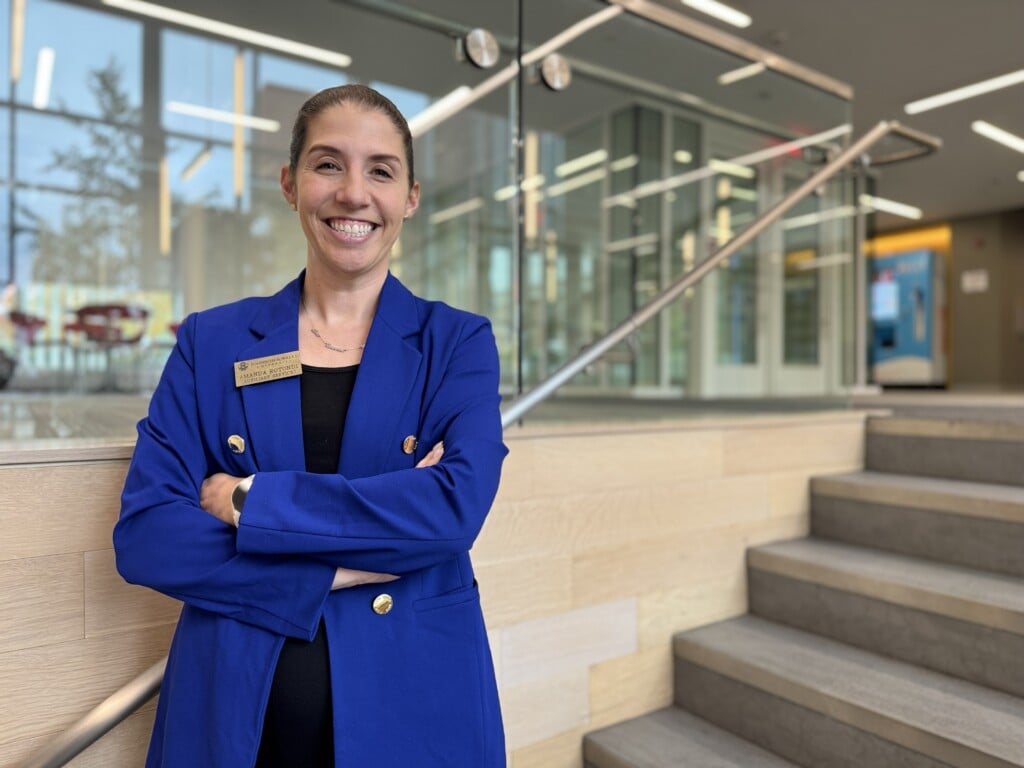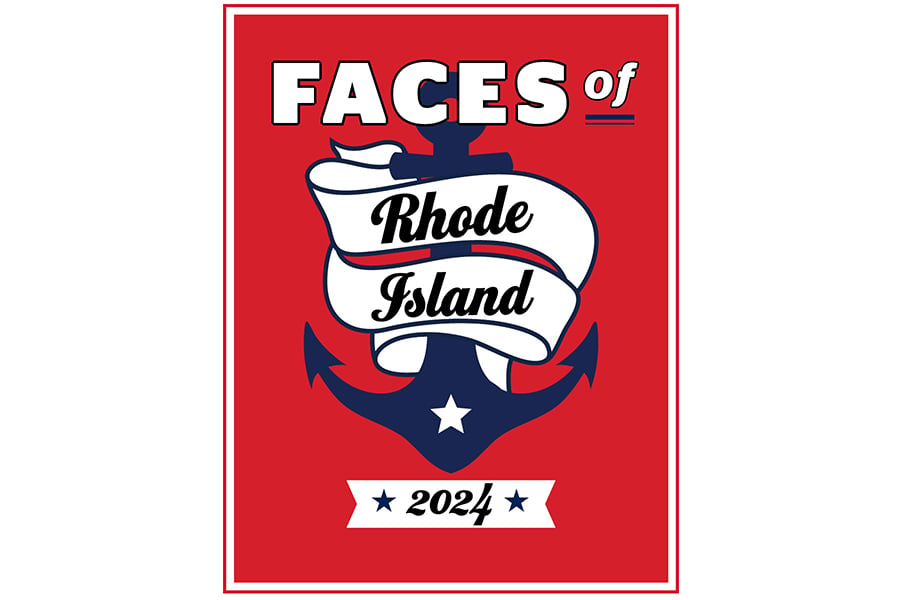Spend a Day at the Museum in Rhode Island
These under-the-radar museums offer glimpses into Rhode Island life.
If you were lucky enough to grow up in Rhode Island — or raise children here — then you know certain museums serve as rites of passage. From splashing in the water room at the Providence Children’s Museum, to piling on the bus for a field trip to the Newport mansions, to marveling at the artwork in the RISD Museum, you’ve probably seen it all.
But did you know Rhode Island is home to more than a dozen smaller museums, many of them supported by volunteers? These sites offer essential glimpses into local life, whether it’s the immigrant groups and military transplants that power our economy or the games and technology that keep us moving on our days off. From Woonsocket to Westerly, we’ve rounded up our favorites and offer a sneak peek into four. Take a look next time you’re planning a Saturday — a visit to the museum offers a chance to explore a new corner of the state, and even learn a little something along the way.
NORTH
Cape Verdean Museum
Since 2005, the Cape Verdean Museum has served as a gateway to Cape Verde in Rhode Island, tracing the roots and history of the island nation through its descendants in southern New England. Originally located in East Providence, the museum opened the doors to a new location on Prospect Street in Pawtucket in 2022.
“Mostly everything we have has been donated to us,” says Yvonne Smart, the museum’s education coordinator and curator.

The Cape Verdean Museum features artifacts related to the local Cape Verdean community, including an advertisement for an ocean liner from Cape Verde.
Touring the museum, visitors first encounter an exhibit on the whaling industry, the vehicle by which many Cape Verdean natives came to live in New England. Once a major port for the Portuguese slave trade, the island nation off the west coast of Africa was a frequent stop for whaling ships in the 1800s. Young men — including Smart’s grandfather, Martin Anthony Lopes — signed on to years-long whaling voyages, often settling in New England after the journey.
“When they left, they left for years,” Smart says. “Many Cape Verdeans came back and forth on the schooners owned by our own people.”
While many Cape Verdeans settled in New Bedford and Nantucket, others, like Smart’s grandfather, lived in Fox Point. A 1920 map of the Providence neighborhood shows the streets where families lived and participated in civic and religious organizations like the Holy Name Society and mutual aid groups.
After coming to New England, many Cape Verdean Americans found new types of work, laboring in cranberry bogs and on the docks. Photographs sourced from the Smithsonian Institution show entire families at work harvesting cranberries. The museum’s collection also includes tools for making traditional Cape Verdean dishes, including cachupa — a stew of hominy corn and beans — and examples of traditional pano textiles.
Following the country’s independence from Portugal in 1975, Cape Verdean Americans formed Tchuba, the American Committee for Cape Verde, to lobby the United States government to provide humanitarian assistance. The museum’s contemporary exhibits record the history of prominent Cape Verdean Americans, including Congressman Hakeem Jeffries of New York, and locals like the Tavares brothers — whose music appeared in Saturday Night Fever — and boxer and actress Kali Reis.
“After independence, Cape Verde started to take back our African identity,” Smart says.
The museum features a library of books and resources on Cape Verde as well as an upstairs gallery space for special events. According to Smart, they receive regular visitors from senior and school groups as well as individuals looking to explore their Cape Verdean identity. The new location, which opened after several years of fundraising and renovations, is ADA compliant and four times the size of the old location. The museum is open Fridays and Sundays from 1 to 5 p.m. as well as for special events. 617 Prospect St., Pawtucket, 228-7292, capeverdeanmuseum.org
Electromagnetic Pinball Museum and Restoration
A museum where everything is interactive and adults and kids alike can play as long as they want? Yes, please!
The Electromagnetic Pinball Museum and Restoration was born out of four friends’ passion for pinball and their desire to share it with the public. In March of 2020, Joe Paquin, Emily Rose, Michael Pare and Grace Whitman rented a room in Pawtucket’s Creative Commerce Center with the goal of filling it up with pinball machines. Many arcades were closing at the time because of the pandemic, Paquin says, and the group saw an opportunity to expand what had previously been their personal collections.
“We figured if we keep the price down, people will come back. We’re cheaper than a movie, and we don’t kick you out after two hours,” he says.
The museum opened the following year, and three years in, the regulars keep coming. At last count, the museum’s collection included 120 pinball machines, with about eighty available to play. For $10, visitors can play all day and get a lesson in pinball history in the process.
“It’s an evolution of this hobby throughout the ages. That’s what we love to show here,” Rose says. “To get new people into this is really our goal.”
The collection ranges from old-fashioned games with no digital components — the oldest dates from 1947 — to newer games featuring celebrities and flashing lights. Many of them, Rose explains, are donated or purchased at low cost from owners looking to get rid of them and go through a “triage-level restoration” before making it to the floor. A game featuring Dolly Parton came from a shed in Westport, Massachusetts, while a Bobby Orr game — one of two in the museum — was found on Cape Cod.
“If it’s free, it’s for us,” she says.
In addition to pinball, the collection includes Skee-Ball and air hockey games popular with kids. Rainy days, the owners say, are especially busy, and the museum also gets visits from students with special-needs and middle and high school STEM programs. The museum helps raise money for Project Pinball, a charity that places pinball machines in children’s hospitals and Ronald McDonald houses around the country. Rose says they’re also looking into installing an Inclusive GameWerks controller to make their machines accessible to people with physical disabilities.
“You can teach almost anything through a pinball machine,” she says.
The museum is open Tuesday through Sunday (and some Monday holidays) from 10 a.m. to 9 p.m. Admission is $10 and allows for all-day play. Parking is available in a lot on Thurston Street. 881 Main St., Pawtucket, electromagneticpinballmuseum.com
SOUTH
Rhode Island Computer Museum
Tucked behind a furniture store on Bald Hill Road is a museum guaranteed to send any visitor spiraling through waves of nostalgia. The Rhode Island Computer Museum is celebrating its twenty-fifth year as a knowledge center dedicated to inspiring future generations by collecting new and old technology. Its Warwick Learning Lab features 2,000 square feet of computer equipment with origins ranging from the pioneer days of computing to the latest in gaming technology.
“We’re a hands-on museum. We want people to come in and touch stuff,” says Dan Berman, a retired civil engineer and board member who serves as the museum’s director and curator.
The museum, which also includes a 5,000-square-foot warehouse in North Kingstown, had an unlikely start. In the mid-1990s, Berman says, a group of British car enthusiasts came together with the idea to collect something smaller and easier to store: computers. By 1999, the group had incorporated as a nonprofit organization, and the museum was born. Almost from the start, he says, the group received donations from schools, businesses and government organizations looking to offload their defunct technology when newer options came around.
“People love their computers, and they want to find a good home for them,” he says.
The collection, which today numbers in the thousands, features everything from the punch card technology that predated modern computers to contemporary virtual reality sets. In one corner, a 1961 salesman kit shows how a computer of the day would have taken up an entire room. The 1965 Wang LOCI-2 — one of the world’s first electric calculators — cost $60,000 and was obsolete within the year. Another gem of the collection, the PDP-9 minicomputer, dates from 1968.
“There are only twelve in existence, and we have the only running one. We’re very proud of it,” Berman says.
An unexpected perk of serving as a clearinghouse of old computer equipment, Berman says, is they’ve also found new life as a prop house. Movies and TV shows ranging from Knives Out to “Severance” have borrowed computers to serve as period-appropriate props during filming — or, in the case of the Academy Award-nominated drama Hidden Figures, build a decoy 1960s-era computer based on floor plans at the museum.
Along with its sizeable collection, the museum is part of the Rhode Island Afterschool Network and hosts after-school programs for students interested in technology. Beginning last year, the museum has partnered with area high schools to host the Greenpower Electric Car Challenge, where student teams build electric vehicles from kits and race them at Ninigret Park. The museum also offers workshops and enrichment courses and includes a maker space for visitors interested in robotics.
“We want to be a resource for people who want to build things,” Berman says. “The outreach part for us is one of the important pieces.”
The Learning Lab is open on Saturdays from 10 a.m. to 4 p.m. and Sundays from noon to 4 p.m. and by appointment. Visits to the warehouse are by appointment only. 1755 Bald Hill Rd., Warwick, 741-6997,
ricomputermuseum.org
EAST
Naval War College Museum
Once the site of the entire United States Naval War College, Founders Hall is now home to the Naval War College Museum. Located on Coasters Harbor Island as part of Naval Station Newport, the museum tells the story of the Naval War College and traces the naval history of Narragansett Bay.
The building was originally constructed in 1819 as the Newport Asylum and Poor House. In 1884, Commodore Stephen B. Luce, first president of the newly established Naval War College, commissioned the building for use as the new school. As the campus expanded, Founders Hall became the administration building and then the site of the Naval War College Museum.
According to Director Ryan Meyer, the museum’s collection offers a varied look at United States naval history, dating back beyond the school’s founding to the American Revolution. Narragansett Bay, he says, has played an outsized role in the country’s naval history, offering a unique opportunity to tell the Navy’s story through a Rhode Island lens.
“There are so many things that Rhode Island has done that have had a direct impact on the overall formation of the Navy,” he says. “Narragansett Bay was essentially one big naval installation for many years.”
Artifacts on display include the Black Ship Scrolls painted by a Japanese artist to document the visit of Commodore (and Rhode Islander) Matthew C. Perry to Japan in 1854, as well as a World War II-era Mark 14 torpedo with a cutaway that allows visitors to peer at its inner workings. The museum’s six galleries feature uniforms from various periods in naval history, model ships, and a sword and writing desk that belonged to naval officer and historian Alfred Thayer Mahan.
“It’s just become an eclectic collection. Everything from cannonballs that are found on the beach that are British proofmarked from the Revolutionary War to modern uniforms of recent graduates,” Meyer says.
While the museum is open to the public, visitors must request clearance in advance due to its location on an active naval base. Instructions and a visitor request form are available on the museum’s website. Meyer recommends contacting the museum to arrange a visit several business days in advance. In addition to the general public, the museum receives regular visits from school groups, veterans and scout troops.
“We’re averaging about 24,000 or 25,000 visitors per year,” he says.
The museum is open Monday through Friday from 10 a.m. to 4 p.m. Meyer also recommends visiting during the annual Salute to Summer event that takes place every August, when the base hosts a free concert and fireworks show open to the public. U.S. Naval War College, 686 Cushing Rd., Newport, 856-5270, usnwc.edu/NWC-Museum
More Museums to Explore:
Museum of Broadcast Technology, Woonsocket, wmbt.org
Providence Jewelry Museum, Cranston, providencejewelrymuseum.org
The International Museum of World War II, Wakefield, wwiifoundation.org
Tomaquag Museum, Exeter, tomaquagmuseum.org
Veterans Memorial Museum, Woonsocket, veteransmemorialmuseumri.org
Seabee Museum and Memorial Park, North Kingstown, seabeesmuseum.com
Living Sharks Museum, Westerly, livingsharks.org
Varnum Memorial Armory Museum, East Greenwich, varnumcontinentals.org
Audrain Auto Museum, Newport, audrainautomuseum.org
Museum of Work and Culture, Woonsocket, rihs.org/locations/museum-of-work-culture
Museum of Natural History and Planetarium, Providence, providenceri.gov/museum
Haffenreffer Museum of Anthropology, Providence, hma.brown.edu
Stages of Freedom, Providence, stagesoffreedom.org
Herreshoff Marine Museum, Bristol, herreshoff.org
Newport Tower Museum, Newport, newporttowermuseum.com
Museum of Newport Irish History, Newport, newportirishhistory.org
The Sailing Museum and Hall of Fame, Newport, thesailingmuseum.org
International Tennis Hall of Fame, Newport, tennisfame.com
Newport Car Museum, Portsmouth, newportcarmuseum.org





































